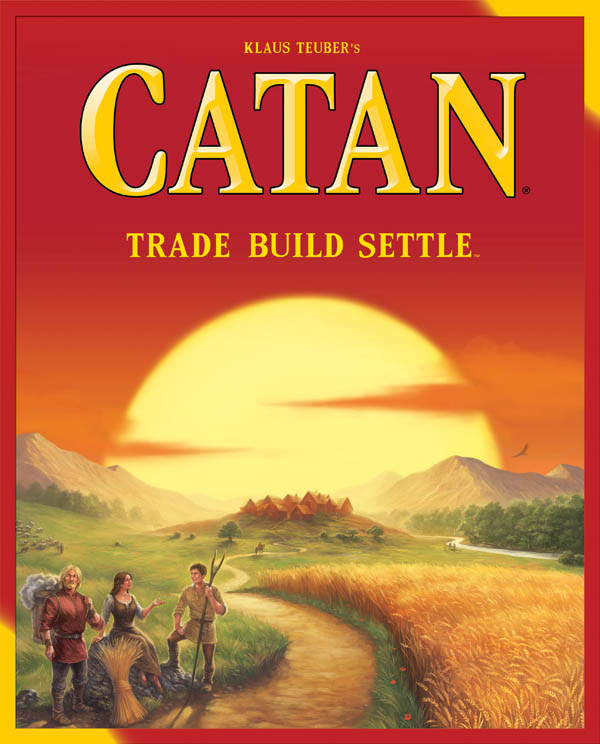Settlers of Catan is a resource management and settlement building game whose mechanics foster a rich experience filled with player interaction despite a very solo-oriented win condition—but how does it do that, and why does it work so well?
Even though it’s a multiplayer game—and, considering that, one that becomes more fun as the player count goes up—Catan has a lot of satisfying solo mechanics. At the very beginning of the game when players place their first two settlements in turn order, players look at the board and analyze potential spaces, weighing what they value in a good settlement location and comparing it to the offerings before them. While the placement of other players’ settlements will definitely affect this decision, this mental judgement of positional value can feel immensely satisfying, like a state of flow, and set the tone of their gameplay for the rest of the game.
Different players, of course, value different things; one player may enjoy specializing in a particular resource, such as sheep, if many of the same tile are next to each other. Combined with a harbor port of that resource (which allows for trading at a 2:1 ratio as opposed to the default 4:1), this can be a powerful and very flexible strategy, since (ironically) by specializing in this way, they have access to potentially rare resources through a decent trade deal. Other players, however, may prioritize having access to every resource and becoming a generalist, and some players will decide to solely prioritize how often a tile will likely generate its resource, rather than the resource itself.

Similarly, players may decide to play “tall” or “wide” as per their preference or the game scenario. These terms indicate whether they prioritize upgrading their current settlements to cities, doubling their resource generation, or if they prioritize expansion and build new settlements instead.
These decisions and the growth of player settlements already serves as a satisfying portion of the game, but the player interaction really brings it to life, creating an effective evocative experience. It’s certainly not quite the same as Troubled Lands’ genuine sacrifice, but there are still many complex player relationships in the world of Catan: though there is only one winner, it is not a zero-sum game.
Interaction in the game comes mainly through three mechanics: trading, the robber, and the rule stating that settlements cannot be placed within 2 roads of each other.
Trading in the game is the most notable and common way players interact with each other, and though giving others resources advances them towards winning, so does receiving the other end of the trade—and because the game has a default 4:1 trading ratio, there is a limit to how greedy players can be with their asking prices, since the trader can always utilize that default trade, should they have the appropriate resources. Through my own gameplay, I’ve also noticed that players that begin the game trading with each other will often continue doing so throughout the game because of an imagined “good trade relation”, even though no such mechanic actually exists in the game. In fact, this is actually a crucial part of the space that Catan evokes—the player relationships.
The robber, disregarding its many uses in terms of balancing the game and acting as an equalizer, is actually a key part of the player relationship experience. The player placing the robber knows that depending on whose tile they decide to block and who they steal a resource from, that the corresponding player(s) will harbor negative relations with them unless this harm is later atoned for. Since stealing a resource requires blocking, deciding to block nobody in order to preserve relations will cost the player a free resource, objectively putting them at a disadvantage. This encourages negative relationships on the board to complement the positive “trade relations” and other such sentiments—which includes the scenario where multiple players are blocked by the same robber; they end up feeling a sense of camaraderie in their collective dismay. As a side note, collecting resources from the same dice throw also creates that sense of camaraderie—players that are happy when an eight is thrown, for example, will typically have positive relations.
The settlement placement rule is the main mechanic that links the multiplayer aspect of the game to the solo one—there is only so much room on the board, and only so many “good” tiles to place settlements next to. Players can block one another with this mechanic, either intentionally or not, and it serves to fill out the two evocative spaces of political-esque relations and solo expansion efforts. This is arguably the primary reason why Catan is best played with as many people as possible—the more crowded and complex the board becomes, the more interesting the connection between those two worlds will be.
